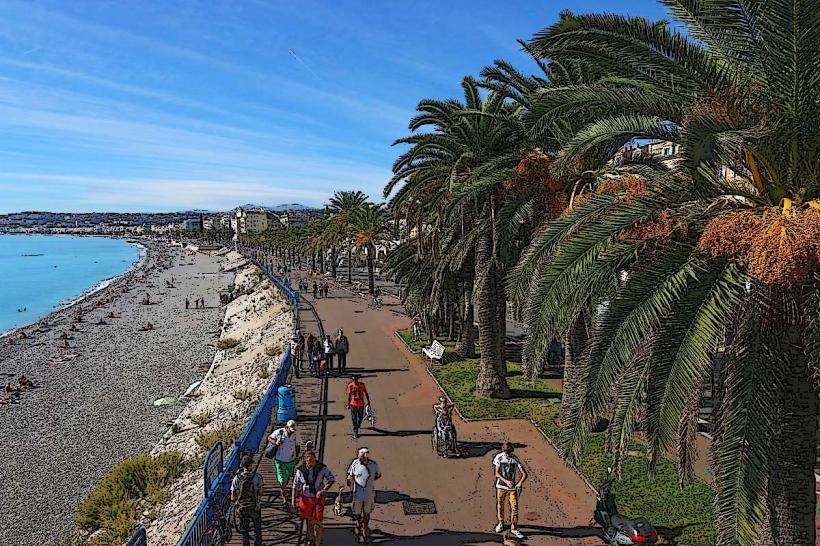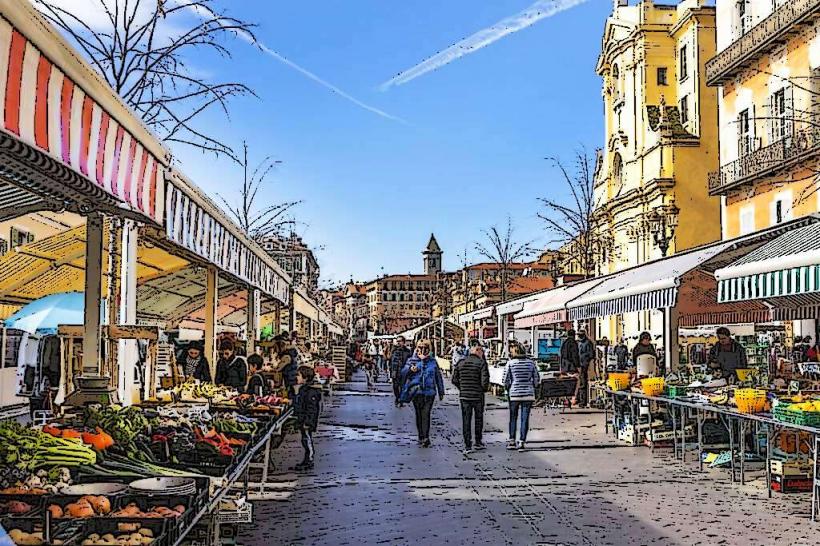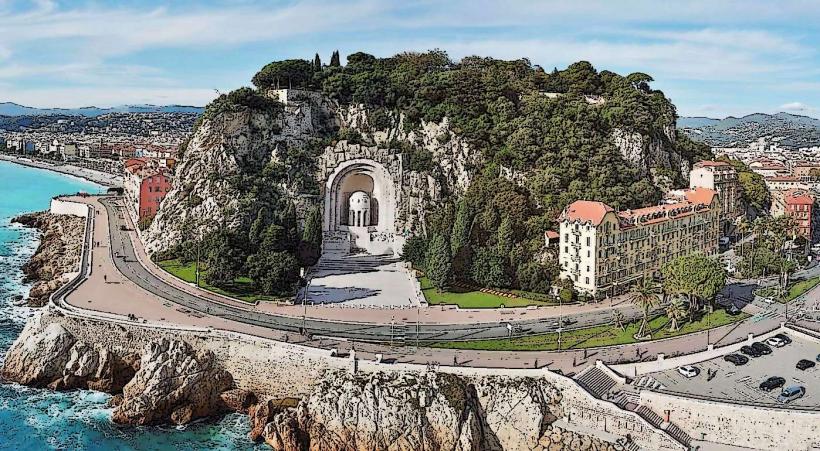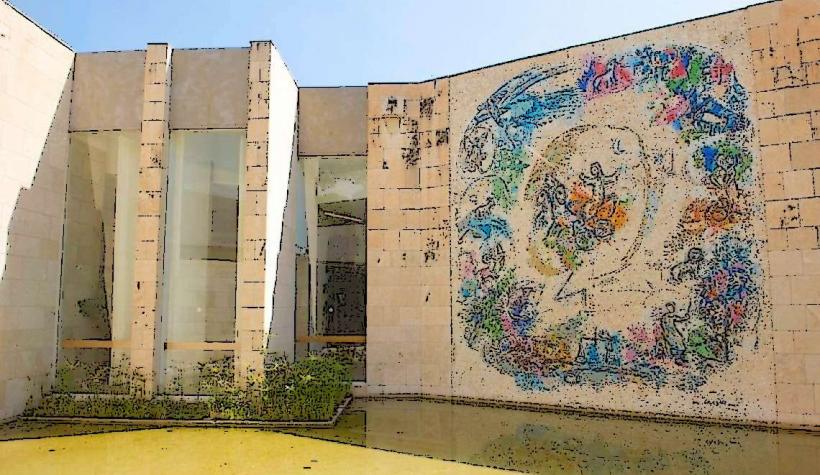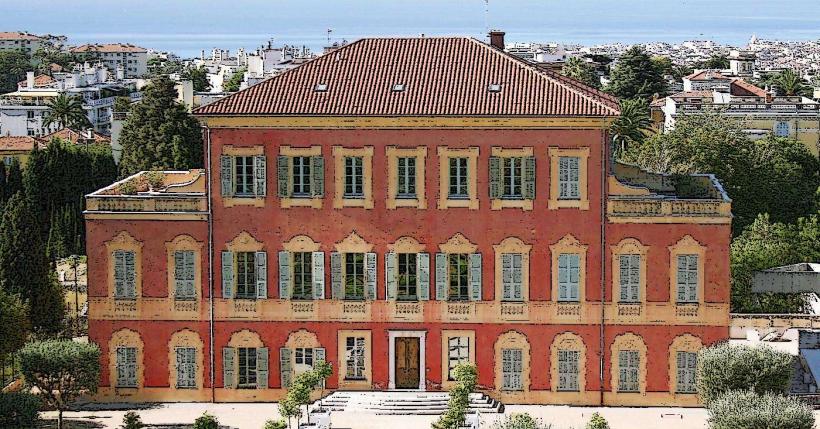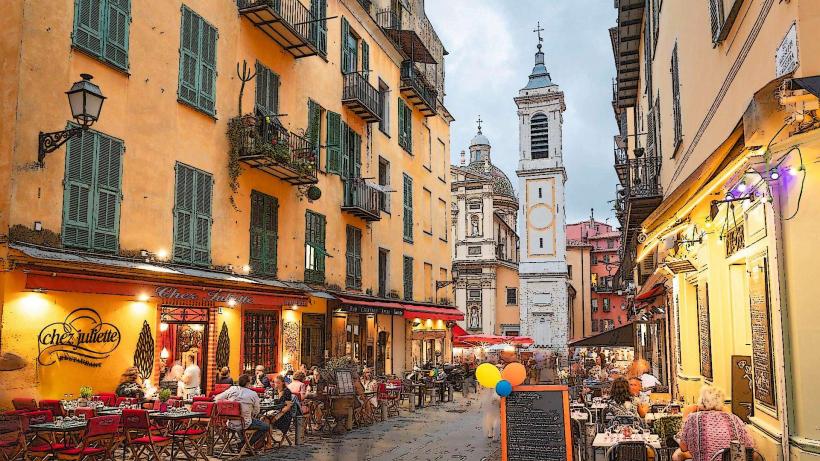Information
Landmark: Russian Orthodox CathedralCity: Nice
Country: France
Continent: Europe
The Russian Orthodox Cathedral of Nice, officially known as the Cathedral of St. Nicholas, is one of the most distinctive and beautiful landmarks in Nice, France. Its rich history, striking architectural style, and cultural significance make it a must-see for visitors to the city.
1. History of the Russian Orthodox Cathedral
The Russian Orthodox Cathedral was built between 1903 and 1912 to serve the growing Russian expatriate community in Nice. During the late 19th and early 20th centuries, Nice became a popular destination for wealthy Russian aristocrats and nobles, who often spent their winters on the French Riviera to escape the harsh Russian winters. Many of them were Orthodox Christians and felt the need for a church to accommodate their religious needs while living in the region.
In response to this demand, the cathedral was commissioned by Tsar Nicholas II, who was a patron of the project. It was designed by the Russian architect David Grigorievich. The church was consecrated in 1912 and remains one of the most important symbols of Russian culture in the region.
2. Architectural Style
The Russian Orthodox Cathedral in Nice is a remarkable example of traditional Russian Orthodox architecture, featuring a distinctive blend of Byzantine and Russian styles. Some of its key architectural features include:
Onion Domes: The cathedral is adorned with five onion domes, which are a hallmark of Russian Orthodox churches. These golden domes make the church stand out against the blue sky and can be seen from many parts of Nice.
Facade and Decoration: The exterior of the cathedral is richly decorated with intricate mosaic artwork, depicting religious scenes and figures. The mosaic work is typical of Russian Orthodox churches, and the cathedral’s vivid colors are a striking feature against the Mediterranean backdrop.
Brickwork and Materials: The building is made of local sandstone and brick, with the domes being covered in gold leaf. The structure is designed to resemble Russian churches, with an emphasis on verticality and ornate detail.
Interior: Inside the cathedral, the decoration is just as opulent. The walls are covered in frescoes and mosaics, many of which were created by Russian artists. The altar is particularly impressive, with richly detailed iconostasis (the screen that separates the nave from the sanctuary) and religious icons.
3. Significance and Function
The cathedral holds both religious and cultural significance for the city of Nice and the wider Russian Orthodox community:
Religious Hub: The cathedral serves as the main place of worship for the Russian Orthodox community in Nice, and it hosts regular services, including Divine Liturgy and various religious celebrations. It is also the site of important ceremonies such as weddings and baptisms for members of the Russian Orthodox faith.
Cultural Symbol: The cathedral is a symbol of the strong historical ties between Russia and France, particularly the Russian aristocracy’s connection to the French Riviera. It serves as a reminder of the Russian presence in Nice during the 19th and 20th centuries.
Connection to Tsarist Russia: The Russian Orthodox Cathedral is one of the few remaining monuments in France that represents the pre-revolutionary Russian nobility. The connection to Tsar Nicholas II and the Russian imperial family makes it a culturally and historically significant site.
4. Visitor Experience
Today, the Russian Orthodox Cathedral is a popular site for tourists, both for its stunning beauty and its fascinating history. Visitors to the cathedral can explore its impressive architecture and intricate interior, which reflects both the religious and artistic traditions of Orthodox Russia.
Visiting Hours: The cathedral is typically open to visitors outside of religious service times, allowing tourists to explore its rich interior and take photographs (though care is taken to respect the sacredness of the space).
Guided Tours: Visitors can also join guided tours to learn about the history of the cathedral and its role in the cultural life of Nice. Many tours delve into the stories behind the mosaics and frescoes, explaining the religious significance of the images and symbols.
Gift Shop: The cathedral has a small gift shop where visitors can purchase religious items, such as icons, candles, and souvenirs, as well as books about the history of the cathedral and the Russian Orthodox faith.
5. Location
The Russian Orthodox Cathedral is located in the Musiciens District of Nice, a short distance from the city center. Its location makes it easily accessible for visitors staying in the heart of Nice or those exploring the city's other cultural landmarks. The cathedral is a serene and peaceful oasis amidst the hustle and bustle of the city, offering a moment of quiet reflection and beauty.
6. Conclusion
The Russian Orthodox Cathedral of Nice (St. Nicholas Cathedral) is an extraordinary landmark that blends religious significance, historical importance, and stunning architectural beauty. Its rich mosaics, vibrant colors, and historical ties to Russian aristocracy make it one of the most iconic and culturally unique landmarks in Nice. Whether you're interested in history, architecture, or simply enjoying the peaceful atmosphere, the cathedral is a must-visit destination on the French Riviera.

